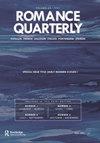‘¡La Vaguada es nuestra!’: The Cultural Politics of Madrid’s First Shopping Mall
IF 0.2
3区 文学
0 LITERATURE, ROMANCE
引用次数: 0
Abstract
Abstract This article adopts an urban cultural studies method to elaborate the historical-geographical formation of Madrid’s first American-style shopping mall, La Vaguada, in relation to important socio-spatial transformations unfolding in the Spanish capital from the 1950s to the early democratic period. Using insights developed in the field of critical geography, it construes the production of space in and around La Vaguada as a historically contingent process that offers remarkably unique insights into wider socio-cultural shifts occurring at a variety of geographical scales. With an eye toward urban planning in Spain during the twentieth century, the article first traces the origins of La Vaguada back to the capitalist speculators that built El Pilar and shows how this neighborhood was closely bound up with the urbanization of capital under dictator Francisco Franco. It then goes on to examine the grassroots campaign organized by the La Vaguada es nuestra neighborhood association in defense of El Pilar in order to map the constellation of contested discourses that ultimately coalesced around the proposed shopping center against the backdrop of Madrid’s historic 1979 municipal elections. The article concludes by performing a close reading of the mall’s architectural form to draw out its unique relationship to (post)modernity.“La vague ada is nuestra!”:马德里第一家购物中心的文化政治
摘要本文采用城市文化研究的方法,阐述了马德里第一家美式购物中心La Vaguada的历史地理形成,以及从20世纪50年代到民主早期西班牙首都发生的重要社会空间变革。利用批判性地理学领域的见解,它将La Vaguada及其周围的空间生产解释为一个历史偶然的过程,对在各种地理尺度上发生的更广泛的社会文化转变提供了非常独特的见解。着眼于20世纪西班牙的城市规划,本文首先将La Vaguada的起源追溯到建造El Pilar的资本主义投机者,并展示了这个社区如何与独裁者弗朗西斯科·佛朗哥领导下的资本城市化紧密相连。然后,它继续研究了La Vaguada es nuestra社区协会为保卫El Pilar而组织的草根运动,以绘制出在马德里历史性的1979年市政选举的背景下,最终围绕拟建购物中心聚集的一系列有争议的话语。文章最后通过对购物中心建筑形式的细读,得出其与(后)现代性的独特关系。
本文章由计算机程序翻译,如有差异,请以英文原文为准。
求助全文
约1分钟内获得全文
求助全文
来源期刊

ROMANCE QUARTERLY
LITERATURE, ROMANCE-
CiteScore
0.30
自引率
50.00%
发文量
18
期刊介绍:
Lorca and Baudelaire, Chrétien de Troyes and Borges. The articles in Romance Quarterly provide insight into classic and contemporary works of literature originating in the Romance languages. The journal publishes historical and interpretative articles primarily on French and Spanish literature but also on Catalan, Italian, Portuguese, and Brazilian literature. RQ contains critical essays and book reviews, mostly in English but also in Romance languages, by scholars from universities all over the world. Romance Quarterly belongs in every department and library of Romance languages.
 求助内容:
求助内容: 应助结果提醒方式:
应助结果提醒方式:


